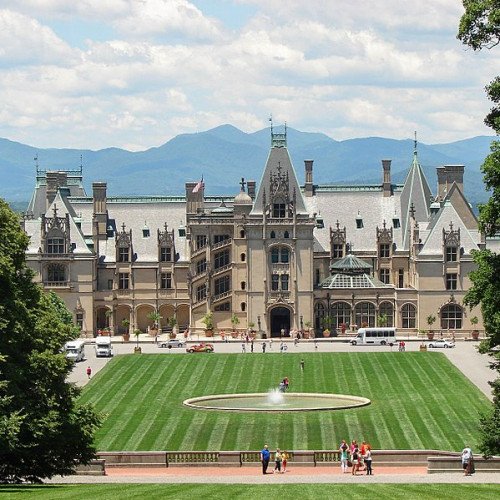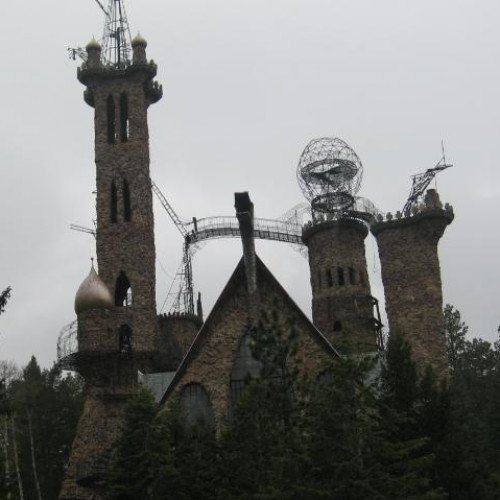Castles of "United States" BILTMORE ESTATE vs BISHOP CASTLE

BILTMORE ESTATE
Biltmore Estate is a historic house museum and tourist attraction in Asheville, North Carolina. Biltmore House, the main residence, is a Châteauesque-style mansion built for George Washington Vanderbilt II between 1889 and 1895 and is the largest privately owned house in the United States, at 178,926 square feet (16,622.8 m2) of floor space (135,280 square feet of living area). Still owned by George Vanderbilt's descendants, it remains one of the most prominent examples of Gilded Age mansions. In the 1880s, at the height of the Gilded Age, George Washington Vanderbilt II began to make regular visits with his mother, Maria Louisa Kissam Vanderbilt, to the Asheville area. He loved the scenery and climate so much that he decided to build a summer house in the area, which he called his "little mountain escape". His older brothers and sisters had built luxurious summer houses in places such as Newport, Rhode Island, the Gold Coast of Long Island, and Hyde Park, New York. Vanderbilt named his estate Biltmore, combining De Bilt (his ancestors' place of origin in the Netherlands) with more (mōr, Anglo-Saxon for "moor", an open, rolling land). Vanderbilt bought almost 700 parcels of land, including over 50 farms and at least five cemeteries; a portion of the estate was once the community of Shiloh. A spokesperson for the estate said in 2017 that archives show much of the land "was in very poor condition, and many of the farmers and other landowners were glad to sell."
Statistics for this Xoptio

BISHOP CASTLE
Bishop Castle is an "elaborate and intricate" "one-man project" named after its constructor, Jim Bishop, that has become a roadside attraction in central Colorado. The "castle" is located in south central Colorado on State Highway 165 in the Wet Mountains of Southern Colorado in the San Isabel National Forest, southwest of Pueblo, Colorado. Bishop bought the land for the site for $1250 when he was 15, and construction on what was originally intended to be a family project to build a cottage started in 1969. After Bishop surrounded the cottage with rocks, several neighbors noted that the structure looked something like a castle. Bishop took this into consideration and soon began building his castle. According to Roadsideamerica, "for most" of the 40 years he has worked on the castle "Bishop was engaged in a running battle with Washington bureaucrats over the rocks that he used," which came from the National Forest surrounding his property. "Bishop felt that they were his for the taking, the government wanted to charge him per truckload." That dispute has been settled. In 1996, he was challenged by the local and state government over unsanctioned road signs that pointed to the site. They settled the dispute by issuing official road signs. The site has become a tourist attraction, and RoadsideAmerica.com devoted a chapter to the castle and rated it "major fun" and describing it as, "one man's massive-obsessive labor of medieval fantasy construction". But it also issued a "parent's alert," warning potential visitors that Jim Bishop is "a tough-talking man with strong, extreme beliefs, and sometimes he expresses them bluntly and loudly. If you and your children want to avoid potentially offensive rants (involving politics and race), you may want to steer clear."